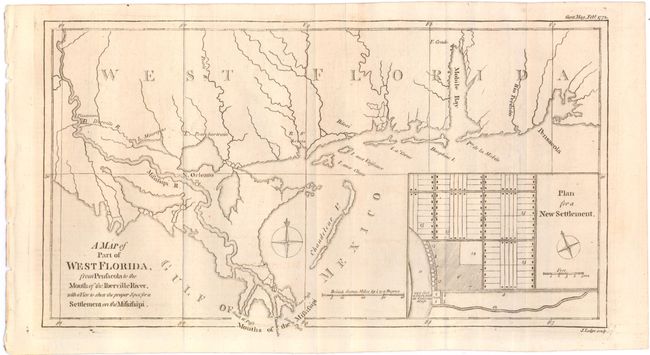Catalog Archive


Auction 145, Lot 193
"A Map of Part of West Florida, from Pensacola to the Mouth of the Iberville River, with a View to Shew the Proper Spot for a Settlement on the Mississipi", Lodge, John

Subject: Colonial South
Period: 1772 (dated)
Publication: Gentleman's Magazine
Color: Black & White
Size:
13.5 x 7.3 inches
34.3 x 18.5 cm
Download High Resolution Image
(or just click on image to launch the Zoom viewer)
(or just click on image to launch the Zoom viewer)